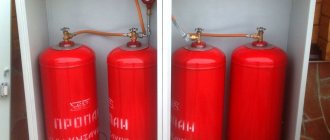Too lazy to read? Watch our video review
Are you confused when choosing biofuel for your fireplace? Don't know which one is better and of higher quality? Kronco is here to help! Now we’ll break it all down and help you understand what biofuel is and what it’s used with, whether it stinks, how long it burns, what it’s packaged in, where to get it and how much it costs. Let's go!
Follow us on social networks!
Operating a biofireplace
The operation of a biofireplace, gel-based or powered by bioethanol, is quite simple, and the fire safety requirements are almost identical to those of any open-flame device. For example, do not place a bio-fireplace under trees in the garden or do not leave flammable substances near the bio-fireplace. You need to ensure that small children and pets do not approach the open fire area, because in essence, a biofireplace is a large burner. In the latter case, we can recommend that parents buy a wall-mounted biofireplace that can be hung on the wall. It is better if it is shielded with protective ceramic glass.
There are also special requirements for outdoor bio-fireplaces: they must be covered with a screen to avoid attenuation from the wind. The biofireplace must be installed on a flat surface: both horizontal and vertical. At the same time, you should not be afraid of a liquid fuel spill: the bioethanol and the hearth zone are separated by a porous ceramic material, so when the biofireplace is ignited, it is not the fuel that burns, but its vapor.
Biofuel composition
Before moving on to a full review of biofuels, let's remember what they consist of. So, biofuel is alcohol (denatured ethanol). It is absolutely harmless to the environment and you, and when burned it breaks down into carbon dioxide and steam.
Produced by fermentation of wheat, cane sugar, beets, potatoes, etc. The combustion process of biofuels occurs without the release of soot, smoke and other products. By the way, some manufacturers also add flavorings to biofuels. The smell of pine, sea salt and coffee, for example.
Despite all the environmental friendliness of the fuel, do not forget that denatured ethanol should never be taken orally, it can be fatal.
Now let's get back to our fuel review.
How does a biofireplace work?
Unlike wood-burning fireplaces, eco-fireplaces have more of a decorative function - although heat is released when the flame burns, it is not enough to fully heat the room.
Biodevices do not require a chimney, hood or other additional elements that threaten to turn the installation of an accessory into a new renovation.
A biofireplace can be selected for any room and interior design - manufacturers offer a wide range of models of various shapes, sizes and colors
They run on liquid fuel, which produces a beautiful fire with even “tongues” of flame.
Design features of the device
An eco-fireplace is a fairly simple device that consists of three main components - a fuel block, a burner and a body made of non-flammable material (usually glass, heat-resistant plastic or metal). Most often, devices are also equipped with a backlight, a protective screen and a flame control regulator.
The fuel block is the most important structural element, which can be represented by a small tank with a fuel supply or an open container with a burner
Automated systems are also equipped with a remote control unit to control the device from a remote control, mobile phone or tablet.
And also many nice additions, for example:
- LED information display, which displays data about the current state of the device, possible breakdowns, and the presence of fuel in the tank;
- automatic ignition and extinguishing;
- cooling system with built-in fan;
- sensors for monitoring temperature, fuel and even carbon dioxide content and humidity in the room;
- child lock function;
- ability to connect to Wi-Fi and the Smart Home system.
The principle of operation of the device is as follows: fuel is poured into a tank or open container, the burner is ignited and “produces” a flame until the fuel is consumed. But a lot depends on the technical equipment of the fireplace.
Simple devices will require “manual” ignition and control over the flame level in the burner. You will also have to extinguish the fire yourself - using a special poker or damper.
To start/stop an automated fireplace, just turn on the corresponding button on the control panel.
Automation provides the maximum level of comfort and safety for the home, but also increases the cost of the device itself and its repair in the event of a breakdown several times.
The specificity of the device’s operation is that flames are formed not directly from the combustion of fuel, but only from its vapors, which are supplied to the burner through the outlet channel. And since the fire burns without smoke or smell, there is no need to build exhaust channels, and the heat generated by the device remains completely in the room.
But, despite the high efficiency indicator, it will not be possible to use an eco-fireplace as the main source of heating - the power is not the same.
An important component of the device is decorative elements. Usually these are ceramic products, colored glass, pebbles, mirrors and other fireproof materials, with the help of which the device can both reliably depict a classic hearth and become a trendy highlight of an urban interior.
Advantages and disadvantages of eco-fireplaces
Unlike wood and gas fireplaces, most biofireplaces (except built-in ones) are mobile devices and have small dimensions.
Therefore, they can be installed in almost any room of the house and even taken out into the open air - for example, a terrace, balcony or local area in a summer cottage.
Portable biofireplaces can also be used for advertising purposes, for example, to decorate the lighting of interior or landscape elements, to unobtrusively emphasize the high status of the establishment
Pros of the device:
- Versatility - there is no interior where a home fireplace with beautiful petals of flame would not fit.
- Easy installation - the device can be built into furniture or purchased as a mobile structure; in any case, installation does not require special knowledge and skills.
- Ease of operation - biofireplaces do not require chimney maintenance, washing off multi-layered soot, collecting firewood or other labor-intensive maintenance. For the fireplace to work, it is enough to fill it with special fuel on time and periodically clean the burner with a soft cloth.
- There is no need to obtain a permit for installation - to install a biofocus, you will not need to engage in long-term negotiations with the fire inspectorate and other services, as when installing a gas or wood-burning analogue. It is enough to follow the safety rules when choosing a location and subsequent operation of an open fire, and the regulatory authorities will not have any complaints against you.
- A beneficial effect on the psyche - a “living” flame is associated with warmth and tranquility, relaxes and induces relaxation, which is not the least important thing in the hectic rhythm of modern life.
As for the disadvantages, the most global of them is the impressive cost of both the equipment itself and biofuel, the reserves of which must be constantly replenished. But if you are willing to pay for the opportunity to decorate your interior with a spectacular twist, consider the options of various models.
Types of liquid biofuels and an overview of them based on 5 main points
Now, let’s look at all the pros and cons of biofuel for modern biofireplaces. For comparison, we purchased 5 biofuel options from different manufacturers from x-kamin.ru. This:
- 1"ZeFire"
- 2"Fanola"
- 3"LuxFire"
- 4"Profit"
- 5"FireBird"
Each of the 5 participants is a representative of Russian production. Which is good news, because they can be found everywhere.
So, what you need to pay attention to when choosing:
1. Biofuel packaging. Why is it important?
It is the quality of the plastic bottle and the presence of a convenient cap with a valve that determines the constant comfortable use of this or that biofuel. For example, like samples No. 1 “ZeFire” and No. 3 “LuxFire”, but it is worth saying that the latter has an unstable bottle bottom, which is unsafe and inconvenient. No. 5 “FireBird” also has a problem with the base of the package; there is also no convenient valve, which allows you to forget about the additional use of a funnel.
Check out our bio fireplaces
Tabletop bio-fireplaces Floor-standing bio-fireplaces Built-in bio-fireplaces Fuel blocks Wall-mounted bio-fireplaces
use of biofuel with funnel
use of fuel without external means
How to use biofuel
To refuel the bio-fireplace, use the following instructions.
- Take the watering can and open the bottle of liquid.
- Pour biofuel evenly into the firebox of the device.
- Wipe the firebox with a dry, absorbent cloth to remove any drips.
- Close the bottle and send it to storage.
Only after this can you start lighting the fireplace. There are equipment configurations with a special opening for fuel filling. In this case, the procedure is greatly simplified.
Please note that it is strictly forbidden to refuel operating or hot equipment, as well as keep heating devices or fire sources nearby.
Rules for using a biofireplace.
- Before refilling the liquid, you must turn off the eco-hearth and wait for it to cool down - 15 minutes or more.
- Do not use paper, straw or wood for lighting - use special matches or a lighter with an extended spout.
- Do not add fuel while the equipment is operating.
- If liquid is spilled on any surface, it is necessary to thoroughly wipe the area with a rag, completely removing the biofuel.
- If bioethanol gets on your skin, you must rinse the area under running water.
- Fuel supplies should not be stored near the fireplace.
- For storage, you should choose a place inaccessible to children.
Manufacturers of biofireplaces recommend not leaving liquid in the fuel block due to its increased volatility. To do this, you need to calculate the desired combustion duration and fill the tank with the appropriate volume of biofuel. You can obtain detailed information about operating features in the instructions for the fuel and the equipment itself.
Rice. 13. High-quality biofuel is the key to excellent operation of an eco-fireplace
2. Does the bio-fireplace smell? Scent or stink?
“We’ll buy biofuel, and then we’ll suffocate from the suffocating fumes...” is a very common misconception among buyers of biofireplaces. Our company Kronco carefully approached the coverage of this issue and tested each sample, as they say, on itself. You can watch in more detail in our video, where we clearly presented everything.
Now let’s briefly tell you that the smell of the purchased fuel depends solely on the composition, on the impurities that are added. But, one way or another, all this is alcohol, and therefore the smell of alcohol is present. When recording our review, it was found that samples No. 1 “ZeFire” and No. 4 “Profit” have a specific aroma similar to tequila. The rest of the options presented have the smell of pure alcohol.
Classification of biofuel fireplaces
There are a huge variety of eco-fireplaces on the modern market, so even the most demanding buyers will not have problems choosing the right shape, design and color scheme.
But the choice of device should be based not only on its spectacular appearance, but also on the availability of free space, because it is one thing to purchase a compact mobile device that can be moved or hidden if necessary, and quite another to purchase a stationary hearth with a portal.
By installation method
In its simplest form, a biofireplace is a small tabletop device that can be placed on any horizontal surface, as long as it is sufficiently stable and wide. Its main advantages are mobility, compactness, low fuel consumption and affordable price.
A tabletop fireplace can become a stylish accessory in the office or a symbol of the hearth with which you can arrange a romantic evening
Wall-mounted - devices with a closed back wall (sometimes also the ends) and a transparent facade. They are most similar to classic fireplace portals, but can be decorated in both historical and modern styles.
Such devices will not take up much space, since they are leaned closely against a wall or other vertical surface.
The portal of a wall-mounted fireplace can be decorated with brick or marble tiles, complemented with a shelf, grate, ceramic logs, and it will become indistinguishable from a wood-burning hearth
Freestanding - beautiful, impressive, but rather large devices that will be more appropriate in spacious rooms, although if you wish, you can choose a fairly compact rectangular model.
3.How much fuel does a biofireplace last? Biofuel consumption.
Which biofuel burns longer? Does it weather or not? What does the flame look like? We conducted 3 tests, the first on the rate of weathering, the second on the combustion of biofuel without filling the fuel block, the third on combustion with filling the fuel block with ceramic wool. What we got:
- 1Over the course of a day, 100 ml of each biofuel evaporated by 90%, only No. 1 “ZeFire” and No. 4 “Profit” had a slightly larger remainder than the others.
- 2When burning fuel in a block without filler, the leader was sample number 3 “LuxFire” - it lasted 43 minutes 58 seconds, the fastest burning was sample number 5 “FireBird” 38 minutes 40 seconds, the other three participants were 3-4 minutes behind the first .
- 3When testing the combustion of biofuel with filling, the longest burning was sample No. 1 “ZeFire” 1 hour 44 seconds, in second place was sample 4 “Profit” 57 minutes 30 seconds, in third place was sample 5 “FireBird” 57 minutes, in fourth place was sample 2 “Fanola” 55 minutes 30 seconds and on the fifth - sample 3 “LuxFire” 55 minutes. But it is worth clarifying that when using ceramic wool, you have to pour more fuel into the block.
- 4Where to buy biofuel? It's all about its availability.
Biofuel consumption in the fireplace
Depending on the type of burner and flame intensity, the consumption ranges from 200 ml to 500 ml per hour. Small decorative models, which are available in tabletop versions, burn no more than 200 ml. The highest consumption of bioethanol is found in devices created in the style of classic wall-mounted fireplaces. A long and wide burner will require up to 500 ml/h.
The thing to understand here is that a small bowl burner design will burn more fuel than a larger one with a regulator if the fire is reduced to its minimum size. In this case, in a large bio-fireplace, the flame will seem to spread across the firebox, which creates beautiful decorative elements of the fire. At the same time, ethanol consumption will be less. The degree of combustion is regulated by a slider lid, which smoothly and easily moves back and forth in all models.
When purchasing a bio-fireplace with a large burner, you must take into account that in order to burn for a long time, you will need to provide an oxygen flow in the room. For a medium-sized device, the air contained in a room of 20 m2 is sufficient. If the flame burns for a long time, you only need to ventilate the room occasionally. Decorative mini-biofireplaces produce a low flame that does not burn much oxygen.
How to use bioethanol correctly?
Especially for refilling biofireplaces, fuel is sold in 2.5 liter and 5 liter bottles. Thus, it is possible to calculate the combustion time of ethanol from one bottle for a specific model. Each bio-fireplace comes with a mini poker for safe ignition of the burner. It creates fire using the principle of a lighter. It is not advisable to neglect it, as it protects against burns and accidental injuries.
Do not fill the fuel container while the fire is burning. First you need to turn off the burner if there is a flame regulator. If it is an open bowl, you should wait until the bioethanol burns out completely, and only then fill it again.
4.Where to buy biofuel? It's all about its availability.
“You won’t find this biofuel during the day... Why should I go to Moscow every time to buy it?” - unfortunately, we often hear such questions, this is understandable; clients are worried that they will not be able to refuel their bio-fireplaces. But there is only one answer: “Use the services of online stores, as we did to conduct tests.” For example, you can buy biofuel here x-kamin.ru Fast delivery is guaranteed, the entire range is always in stock.
5. Cost of fuel for a biofireplace.
Cost is an integral attribute of a purchase, so it’s worth studying the difference in the price segment in advance:
- 1For 1.5 liters of “ZeFire” you need to pay 440 rubles.
- 2For 1.5 liters of “Fanola” you will pay 600 rubles.
- 3For the same volume of “LuxFire” it will cost 450 rubles.
- 4The price of Profit biofuel turned out to be a little shocking; for the same 1.5 liters you will have to pay 810 rubles.
- 51.5 liters of FireBird biofuel will cost 410 rubles.
So, it turns out that basically all the samples are similar, and the only obvious disadvantage can be the price of biofuel, such as for sample number 2 “Fanola” and 4 “Profit”.
Biofuels overview
Many manufacturers of biofireplaces offer their own fuel for operating the equipment. In most cases, it is advisable to choose products from one company - this guarantees full compliance with the properties specified by the developers. If for some reason you don’t like or are not satisfied with a brand’s biofuel, then there are many alternative options. Let's look at popular offers on the market.
Rice. 5. Eco-fuel from the popular company Bionlov
Bionlov
Premium biofuel developed by specialists from Poland and Switzerland. The liquid is produced using advanced filtration technologies using molecular purification. Selected raw materials are used to create fuel. Bionlov®Premium is uncompromising quality.
The brand’s bioethanol has undergone a series of tests at the factories of leading European manufacturers. Tests have confirmed the high quality of eco-fuel. The safety of the fuel has been proven by government research institutes throughout Europe, and biofireplace manufacturers recommend Bionlov®Premium on a par with branded fuel. The products have certificates of compliance with international standards. When 1 liter of fuel is burned, water and a small amount of carbon dioxide are released, as well as about 3 kW of heat, which is 10-20% more than its analogues.
Deep fuel purification guarantees equipment durability and ease of maintenance. The liquid is supplied in 1 and 5 liter containers.
Rice. 6. Biofuel from Fanola
Fanola
The producer of bioethanol under the FANOLA® brand is the well-known developer of biofireplaces – Planika. The American-Polish manufacturer occupies a leading position, exporting products throughout the world.
The fuel was developed in the company’s laboratories, and its formula is patented by the brand. The products underwent multi-stage testing and testing at the plant, where the safety of eco-fuels and the complete absence of harmful substances both in the composition and during combustion were proven. The results of the tests were confirmed by international experts.
Certificates:
- EcoLogo®;
- TÜV;
- CNBOP;
- PZH;
- OMNI-Test Laboratories Inc.
The tests revealed complete combustion without the formation of smoke, odor or soot. During combustion, a small amount of carbon dioxide is produced, comparable to human breathing.
The safety of Fanola has been confirmed by national research centers, thanks to which the brand’s biofuel is allowed to be used in biofireplaces located in rooms with children, public organizations, and crowded places. The fuel's complete safety for the environment has been confirmed. The liquid is suitable for use in biofireplaces of any production, regardless of its type and location.
The reason for Fanola's popularity lies in its consistently high quality and reasonable cost. The liquid is supplied in containers of 1 and 5 liters. Today, FANOLA® is the No. 1 fuel for biofireplaces on the domestic market.
Rice. 7. Kratki bioDeco - top quality biofuel
Kratki bioDeco
Another popular manufacturer of biofireplaces from Poland, the Kratki company, has its own offer. The company was founded in 1998, intensively expanding the list of products. Today, the brand supplies goods to 60 countries around the world, and its activities have been awarded at the state and international level. Kratki is a European-level production using modern technologies.
BioDeco closes the top three. The liquid is developed for the company’s own equipment and meets all safety requirements. Products are certified and verified through testing in reputable research institutes. The product’s compliance with international standards is confirmed by certificate Nr PZH/HT-3066/2015. This indicates compliance with all requirements regarding production, composition and application.
BioDeco comes in 3 variants:
- without smell;
- with the smell of the forest;
- with the smell of coffee.
The company also offers special odorless oils for adding to fuel. This product is designed for fans of aromatherapy.
Rice. 8. Bioethanol from LuxFire
LuxFire and Good Fire
Ecofuel production has also been established in Russia. Confirmation of this is LuxFire fuel, produced by the manufacturer of biofireplaces Lux Fire RUS. The company has been operating since 2015, and develops equipment of any complexity: inexpensive eco-hearths are produced under the Lux Fire brand, and special limited edition models with an original design are produced under the Good Fire brand.
Taking into account its own experience, the company has developed its own fuel for biofireplaces. The production technology and formula of the liquid were developed in the factory’s own laboratory. LuxFire is a patented fuel with good performance characteristics. The product has a safety data sheet, as well as a TU certificate 2389-015-89167980-2016, indicating that the fuel complies with Evrazstandard.
Biofuel was developed for the needs of the domestic market, but the manufacturer is gradually expanding its presence in the CIS countries. The company offers liquid under the LuxFire brand in containers of 1, 1.5, 5 liters, as well as special premium fuel Good Fire in 1 liter packaging.
Rice. 9. Eco-fuels from ECOline
ECOline
Among the manufacturers offering liquid with aromatic additives, ECOline products stand out. The company offers high-quality bioethanol with and without additives. Compliance with quality standards is confirmed by a certificate obtained in a study by the National Research Institute of Poland, which puts forward serious requirements for products.
What flavors does the company offer:
- lavender;
- chocolate dream;
- stronger – chocolate dream;
- the smell of the holidays (Christmas);
- rose;
- vanilla;
- forest;
- coffee;
- cinnamon and orange.
In addition to bioethanol with odor, the manufacturer offers aromatic oils for individual addition to existing fuel, as well as bio-fireplaces, stoves and technical fluids.
The company's products are available in 1 and 5 liter packaging.
ZeFire
The brand has been operating for more than 5 years, and during this time it has managed to establish itself well. Initially, these were simple but practical manually operated devices. Today the company offers premium quality equipment at affordable prices. This also applies to fuel.
Types of ZeFire biofuel:
- Expert – an inexpensive solution of standard quality;
- Premium – elite liquid for bio-fireplaces;
- Premium with coffee scent.
The “Expert” version comes in a 1.5-liter package, while premium fuel comes in a 1.1-liter package. The liquid is absolutely transparent and has no sediment due to deep filtration of the mixture. ZeFire products have good user reviews.
Rice. 10. FireBird brand eco-fuel
FireBird
The trademark belongs to the Russian company Belfort Fireplace, operating since 2007. The company works closely with leading manufacturers of biofireplaces, producing its own solutions. The FireBird brand emerged relatively recently - in 2014, but has already established itself well in the market and is well recognized. The production of biofuels under this brand has been organized since 2015.
The FireBird assortment consists of:
- standard fuel in a 1.5 liter bottle;
- FireBird-EURO – 5 liter canister with an elongated neck;
- Aroma series – flavored liquid in 1 liter container.
Good value for money - this is how you can characterize the brand’s products.
“Is it possible to make biofuel with your own hands?”
We are afraid to imagine, but some people, it turns out, are trying to create biofuel with their own hands. Friends, this is impossible! Don't even try to do this at home, you're not Walter from Breaking Bad.
Yes, the composition of biofuel is simple - bioethanol, that is, alcohol and impurities. But this does not mean that you just need to buy ethyl alcohol and add something to it. Moreover, pure ethyl alcohol is prohibited for use in Russia (Resolution of the Chief State Sanitary Doctor of the Russian Federation dated March 27, 2021 N39 “On the suspension of retail trade in alcohol-containing non-food products, alcohol-containing food additives and flavorings”).
If you do find 96° medical alcohol, all you have to do is mix it with gasoline. On the Internet it is recommended to purchase the kind used for Zippo lighters. In the proportion of 1 liter of alcohol to 70-80 ml of gasoline. These substances have different densities, so you can’t just mix them in a jar. It is better to connect them before directly refueling the bio-fireplace. After lighting your homemade fuel, you can enjoy the wonderful smell of alcohol in the air! Of course, over time the smell will disappear, but the residue will remain.
Useful information on eco-fireplaces
The device is an enlarged version of a conventional alcohol lamp with an impressive design. There is a container for loading flammable substances, as well as a damper to regulate the intensity of the flame. To decorate an eco-fireplace, ceramic elements, metal parts and heat-resistant glass are used.
Bioethanol burns without soot and soot, so eco-fireplaces do not need chimney structures, this simplifies their operation and makes them mobile
Glass panels not only decorate such a device, but also serve to protect against heat. Not all devices have such protection, but glass screens of various modifications are sold separately.
It makes sense to purchase a protective element, especially if you plan to use a mobile model that will be installed in different places. Often such a fireplace is decorated with artificial firewood to give the structure a traditional look, but this is not the only option.
Eco-fireplaces come in floor-mounted, table-top, wall-mounted and even tabletop types, they vary in size but work the same way.
You cannot add fuel to the eco-fireplace while it is operating. If bioethanol has been spilled, the contaminated surface should be cleaned immediately
Such devices can be used to heat a room or as interior decoration. The device does not require wires, so it can be easily moved. For example, on a cool summer evening, an eco-fireplace can be installed on an open veranda. There are devices of various shapes.
An interesting option for a stylish office could be a miniature model, the chamber of which is built into the tabletop, with only the lid protruding above the surface. There are interesting options in the form of a basket, an elongated cylinder, etc.
Since an eco-fireplace in which such biofuels are burned does not need to be equipped with a combustion product removal system, the heat generated during combustion is not lost to heating additional structures.
The basic design of an eco-fireplace is almost no different from a conventional alcohol lamp, so such a device is not difficult to make with your own hands
Therefore, it is believed that the efficiency of such a device is about 95%, a fairly high figure for any system. To operate a conventional eco-fireplace for an hour, half a liter of bioethanol is usually sufficient. At the same time, 6-7 kW/h of energy can be obtained from a liter of fuel.
It is believed that a standard eco-fireplace can successfully replace an electric heater of about three kilowatts.
Wall-mounted models of eco-fireplaces can imitate traditional devices; they are varied and provide many options for the interior design of an apartment or office.
The advantage of using a biofireplace compared to other heaters is that this device slightly increases the humidity in the room. Almost any traditional heating method, on the contrary, removes moisture, which can have a negative impact on people’s health.
Both eco-fireplace and bioethanol are very easy to use, and this fuel is no more dangerous than other flammable substances used in everyday life. The combustion of bioethanol can be regulated if the design of eco-fireplaces provides for such a possibility.
The device can provide more or less heat and light, and accordingly, the time of fuel consumption will change.
This heating method also has some disadvantages. For example, despite all the ease of use, bioethanol cannot be added to the fireplace container. You need to not only wait for the composition to burn out, but also let the device cool. This point will have to be taken into account when planning the time to use the fireplace.
Although bioethanol fireplaces do not require a chimney, such devices should not be used uncontrolled.
An open flame always poses a fire hazard, so it is best to hide it behind a heat-resistant glass screen. This item can be purchased separately
A room that is heated in this way must be regularly ventilated to balance the amount of oxygen and carbon dioxide. If a little fuel is spilled while refueling the fireplace, it must be wiped up immediately, even if it is only a couple of drops of flammable substance.
To do this, it is better to keep rags with good absorbent properties on hand. For ignition, it is allowed to use special long matches, but long metal lighters are more often used. Some biofuel fireplaces are equipped with an electric ignition function, which is very convenient, but increases the cost of the model.
How to save on biofuel? Transportation of fuel through a transport company
When delivering fuel by a transport company, remember: bioethanol belongs to the third class of the dangerous goods category. Before transportation, you will have to pay an additional “tax” for substances that are dangerous for transportation, prone to fire. Biofuel must be packaged properly and can only be transported by land.
To avoid unnecessary waste of money, it is better to order fuel immediately with a biofireplace and more. For large volumes, our manager can give you a discount, so you can save twice as much. We will pack the fuel and negotiate with the retailer, since we often send biofuel and know how to do it correctly.
Is it possible to dilute biofuel for a fireplace with water?
If you think that you can dilute the fuel with water to increase its quantity, and everything will be fine, you are mistaken. If you dilute the fuel with water, the water will simply appear at the top, and attempts to light the fireplace will be in vain.
You cannot independently add to biofuel (especially when burning a biofireplace) all sorts of chemical compounds that call for changing the color of the fire or that promise unforgettable aromatherapy. If foreign substances get in, it is unknown how the fire will behave, so we do not recommend it. If you really want to, online stores have a wide range of ready-made flavored fuels. Or you can use essential oils. Apply 2-3 drops of natural oil to the ceramic decorations of the bio-fireplace to give the desired aroma. Don't forget to ventilate the room.
By the way, of all the presented biofuel options, one stood out because of its composition, in which, in addition to bioethanol, water was added - this is sample number 5 “FireBird”. Is it good or bad? We didn't notice much of a difference.
Description of bioethanol
People cannot yet do without combustible fuel completely, but they can make it less harmful to the environment. Bioethanol is a colorless and highly flammable liquid. To make a safe product, denatured ethanol is used, which is obtained from ordinary alcohol. The denaturation process produces a substance that is safe in relation to the external environment and has a neutral effect on living organisms.
When bioethanol burns, beautiful and even flames are formed, which are difficult to distinguish from living fire. The efficiency of this liquid is 95%. With such fuel, the room is completely warmed, as with a regular fireplace. Some manufacturers combine bioethanol with sea salt, which has a crackling effect on the logs. The orange color is obtained due to special additives added to the fuel. There are eco-fuel options with fragrances. The product burned in the fireplace may smell like pine needles, rosemary, coffee or birch wood.
Green fuel has many benefits. The intensity of its combustion can be adjusted independently. As water is released into the air, the humidity level in the room increases. The product is available in canisters, so it is convenient to store it at home.
The appearance of the flame produced by burning biofuels is practically no different from the appearance of burning logs
The pure substance does not have a harmful effect on the human body or the environment. When burned, it emits only water vapor with carbon dioxide, so it does not require powerful ventilation. But it is recommended to ventilate the room so that carbon dioxide does not accumulate in the house. You can make bioethanol for a fireplace yourself, since it has a simple composition.
Since the combustion of biological fuel does not cause the formation of carbon monoxide, there is no formation of soot and soot
Manufacturers often add Bitrex to ecofuels. This substance is characterized by a bitter taste, so it will not poison small children who taste everything they find. If kids try to drink the product, they will immediately spit it out. Sometimes this fuel causes vomiting.











